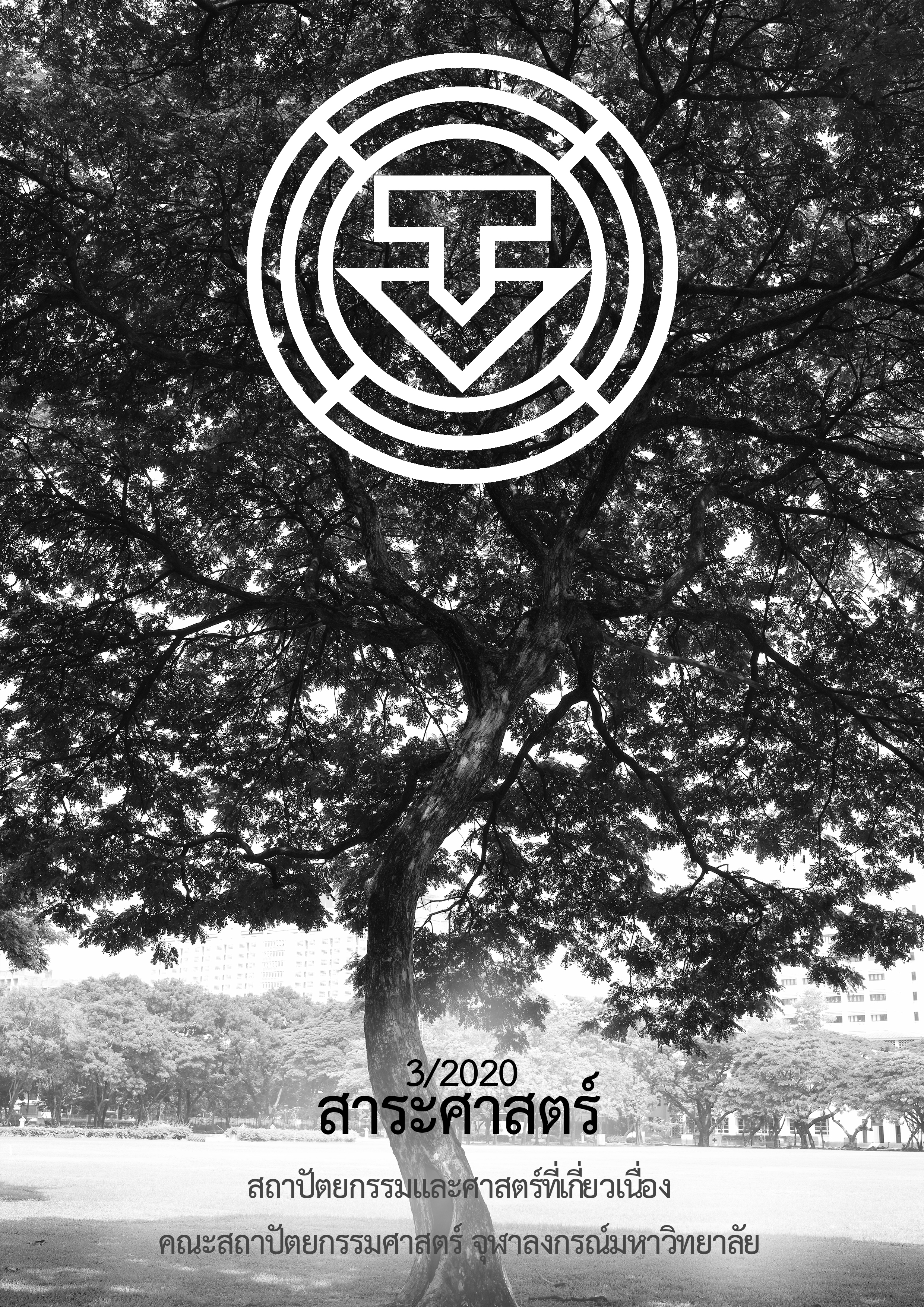The Spatial and Amorphous Structure of Nimmanhaemin Area in Chiangmai
Main Article Content
Abstract
The objectives of this research study were to analyze spatial changes and to analyze the amorphous structure of the traffic network and related factors in Nimmanhaemin area in Chiangmai. The research methods were document analysis, space exploration, geo-informatics, and space syntax models.
It was found that there were 3 main spatial changes in Nimmanhaemin area, namely: the urban development period between 1964 and 1997, the period of urban identity between 1998 and 2008, and the smart city development period between 1994 and 1999. The key factors involved in the changes included the development of the traffic networks, the Urban Development Plan, Urban Planning, Creative Economy, Social Media, Tourism, and Smart City Strategies. As for the amorphous structure of the area, there was Nimmanhaemin Road in a lining form as the main route along the area. The secondary road was in a herringbone form and an original local road was in an independent form. On average, the potential accessibility value to the traffic network in the Nimmanhaemin area at the global integration was 1.027880, the minimum value was 0.540112 and the maximum value was 2.030422, respectively. On average, the potential accessibility value to only the traffic network in the Nimmanhaemin area was 1.430300, a minimum of 0.333333, and a maximum of 3.125447, respectively. As for the potential accessibility value to traffic network itself, on average, was 2.682350, a minimum of 1.000000, a maximum of 16.000000, respectively.
The potential access to the area was corresponding with the utilization of buildings, the amount of traffic during the week and weekends, and types of activities in the area. These affected the participation of local people and the liveliness of the area with a variety of activities in various periods. However, there are some suggestions worth considerations to improve the traffic network in the area. The footpaths, landscapes and walking facilities to promote area utilization and walking should be improved. They can be suitable to make the Nimmanhaemin area be a smart area of Chiang Mai in the future.
Article Details
References
กรมโยธาธิการและผังเมือง. “กฎกระทรวงผังเมืองรวมเมืองเชียงใหม่.” สืบค้น 3 มีนาคม 2563. http://www.dpt.go.th/wan/lawdpt/data/01/2553_4/129_36a_250455_3.pdf.
กฤตชณน จงบริรักษ์. “วิวัฒนาการเชิงอัตลักษณ์ในย่านนิมมานเหมินท์.” Veridian E-Journal, Silpakorn University 10, 3(2560): 2750-2762.
จังหวัดเชียงใหม่. “แผนยุทธศาสตร์การพัฒนาเมืองอัจฉริยะ Chiangmai Smart City Strategy Plan.” สืบค้น 25 พฤษภาคม 2563. https://www.chiangmai.go.th/managing/public/D2/2D11Sep2019090618.pdf.
รวี หาญเผชิญ. “ผลกระทบของอาคารสูงต่อสภาพแวดล้อมเมืองเชียงใหม่.” วิทยานิพนธ์มหาบัณฑิต ภาควิชาการวางแผนภาคและเมือง คณะสถาปัตยกรรมศาสตร์ จุฬาลงกรณ์มหาวิทยาลัย, 2536.
สำนักงานคณะกรรมการพัฒนาการเศรษฐกิจและสังคมแห่งชาติ. “แผนพัฒนาเศรษฐกิจและสังคมแห่งชาติ ฉบับที่ 4.” สืบค้น 15 มีนาคม 2563. https://www.nesdc.go.th/ewt_w3c/ewt_dl_link.php?filename=develop _issue&nid=3779.
สำนักงานคณะกรรมการพัฒนาการเศรษฐกิจและสังคมแห่งขาติ. “แผนพัฒนาเศรษฐกิจและสังคมแห่งชาติ ฉบับที่ 5.” สืบค้น 15 มีนาคม 2563. https://www.nesdc.go.th/ ewt_w3c/ewt_dl_link.php?filename=develop_issue&nid=3780.
สำนักงานคณะกรรมการพัฒนาการเศรษฐกิจและสังคมแห่งขาติ. “แผนพัฒนาเศรษฐกิจและสังคมแห่งชาติ ฉบับที่ 6. สืบค้น 15 มีนาคม 2563. https://www.nesdc.go.th/ ewt_w3c/ewt_dl_link.php?filename=develop_issue&nid=3781.
สำนักงานคณะกรรมการพัฒนาการเศรษฐกิจและสังคมแห่งขาติ. “แผนพัฒนาเศรษฐกิจและสังคมแห่งชาติ ฉบับที่ 7. สืบค้น 15 มีนาคม 2563. https://www.nesdc.go.th/ ewt_w3c/ewt_dl_link.php?filename=develop_issue&nid=3782.
อภิรดี เกษมศุข. สเปซซินแท็กซ์ หนึ่งการศึกษาสัณฐานวิทยา. กรุงเทพมหานคร: บริษัท เมจิก พับบลิเคชั่น จำกัด, 2561.
Al-Sayed, Kinda. Space Syntax Methodology. London: UCL Press, 2018.
Gehl, Jan. Life Between Building Using Public Space. Washington: Island Press, 2011.
Hillier, Bill. “City as Movement Economies.” Urban Design International 1(1996) :49-60.
Hillier, Bill and Hanson, J. The Social Logic of Space. New York: Cambridge University Press, 1984.
Jacobs, Jane. The Death and Life of Great American Cities. New York: Random House, 1961.


